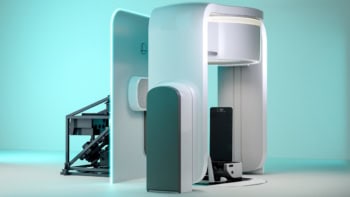One of the three scientists who shared the Nobel Prize for Physiology or Medicine in 1962, Maurice Wilkins, died on Tuesday aged 87. He was the first to take X-ray diffraction images of DNA -- the molecule of which genes are made -- and it was one of his images that inspired James Watson and Francis Crick to go on and discover the structure of DNA.
Maurice Wilkins was born in New Zealand in 1916, the son of a doctor, and was sent to school in England at the age of six. He received a degree in physics from Cambridge University in 1938, then carried out research to improve radar screens, earning a PhD in 1940. He subsequently worked on the separation of uranium isotopes for nuclear weapons before joining the Manhattan atomic bomb project in the US.
After returning to Britain in 1945 and working as a lecturer at St Andrews University in Scotland for a year, he moved to King’s College London, where he joined the biophysics unit. He began taking X-ray diffraction images of samples of DNA and it was one such image, which he displayed at a talk in Naples in 1951, that excited a member of the audience, the young American biologist James Watson.
While Watson and Crick investigated the structure of DNA at Cambridge, Wilkins hired the crystallographer Rosalind Franklin to help him. It was one of Franklin’s X-ray diffraction images that Wilkins showed Watson and which led to Watson and Crick’s discovery in 1953 of the helical structure of DNA.
Wilkins, whose death follows that of Crick in July this year, became professor of biophysics at King’s College in 1970 and remained connected with King’s until his death. He was a prominent campaigner for nuclear disarmament and was president of the British Society for Social Responsibility in Science from 1969 to 1991. His autobiography, The Third Man of the Double Helix, was published last year.



